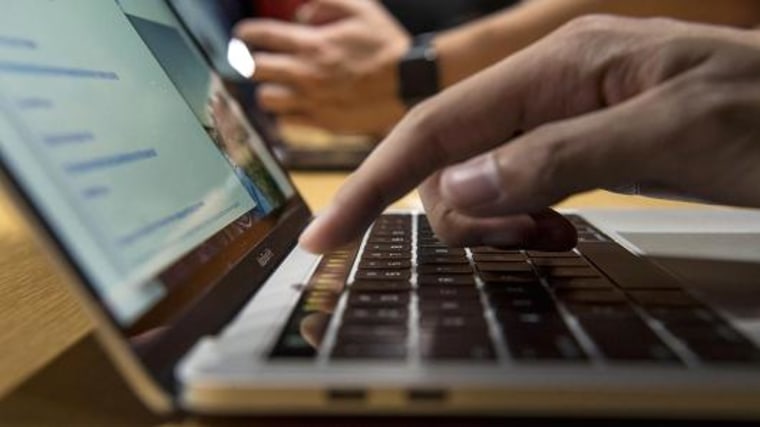Many hardcore Mac users are already feeling alienated by the design of Apple's new MacBook.
Apple unveiled on Thursday three new MacBook Pro models, two of which featured a new Touch Bar, a customizable touch screen strip in lieu of traditional function keys. In keeping with its "Pro" line, the company demonstrated tasks of the creative professional, like Photoshop and music remixing.
As the revamped computer doesn't ship for at least two weeks, much remains to be tested. Plus, lower priced, more powerful versions may come as soon as next year, based on predictions by reliable Apple analyst Ming-Chi Kuo of KGI Securities, cited by 9to5Mac.

But professional tasks like photo editing and DJing might not be as easy as Apple makes out, leaving users who say they've been waiting patiently for an upgrade out in the cold.
The new MacBook Pro computer has such a limited number of USB-C ports, and requires users to look down constantly, argues Trent Lapinski, founder and CEO of tech consulting company Mystic Labs. That means it lacks ports like SD card readers that would be used by "power users" like photographers, and requires a dongle for more precise, heavy-use accessories like mice and external displays, notes Bram Van Oost, co-founder at development firm Cloudoki.
The lack of function keys also seriously alters the workflow for many developers, writes Alexey Semeney, founder and CEO of development platform DevTeam.Space. And the computing power may not be enough for developers working on advanced trends like virtual reality or 3-D graphics, writes Cody Brown, founder of VR production studio IRL.
Some of the features — like adding Touch ID — are great for consumer activities outside work, like shopping, writes Miriam Isaac, who does user experience for Mercava. But Apple seems to be angling less for professionals and more for "amateur creatives," writes Owen Williams for Charged. Meanwhile, Apple executives marketed the new laptops to customers that had previously bought the consumer-focused line, MacBook Air.
And in a world where many creative professionals freelance with variable paychecks, Apple pushed a steep price increase. Still, starting at $1,799 with a Touch Bar, the computer is still well below Microsoft's beefy new $2,999 rival, Surface Studio.
To be sure, these changes, some argue, are more philosophical than practical.
"In smartphones as in PCs, the focus of competition at the high end is now moving to different approaches rather than hardware performance," writes Jan Dawson, chief analyst at Jackdaw Research.
It could come down to a conscious decision to focus less on innovating in a product that has already peaked, like the laptop, and focus on the future, like the phone, Benedict Evans and Steven Sinofsky of Andreessen Horowitz discussed in a podcast. Dawson calls the cries that Microsoft is stealing creative customers "totally overblown."
"Apple has long since expanded beyond that base, especially if you look at the full set of devices including iPhones," Dawson writes. "Apple clearly isn't selling hundreds of millions of iPhones solely to people that use Photoshop for a living. Even if you look at Mac buyers, they're much broader than the cliche of ad agency creatives and video editors."
While many designers are thrilled with Apple's vision, too, Andric Tham, a user experience designer, calls the computer a bet that mobile and web developers, not graphic designers and photographers, are the new core of creative professionals.
"Microsoft made the better computer," Tham writes. "Apple made, arguably, the better bet."